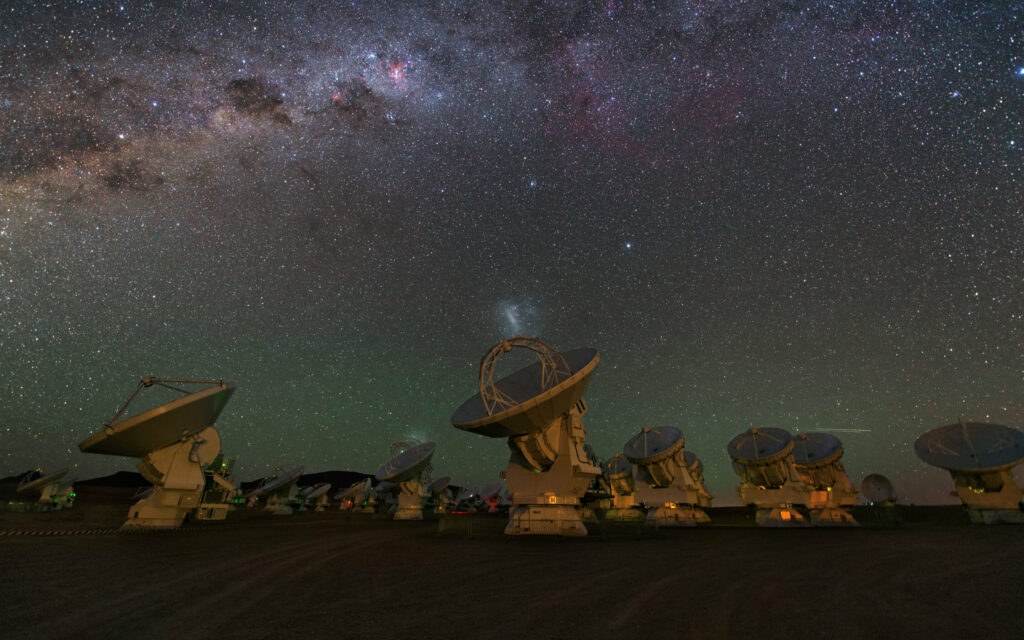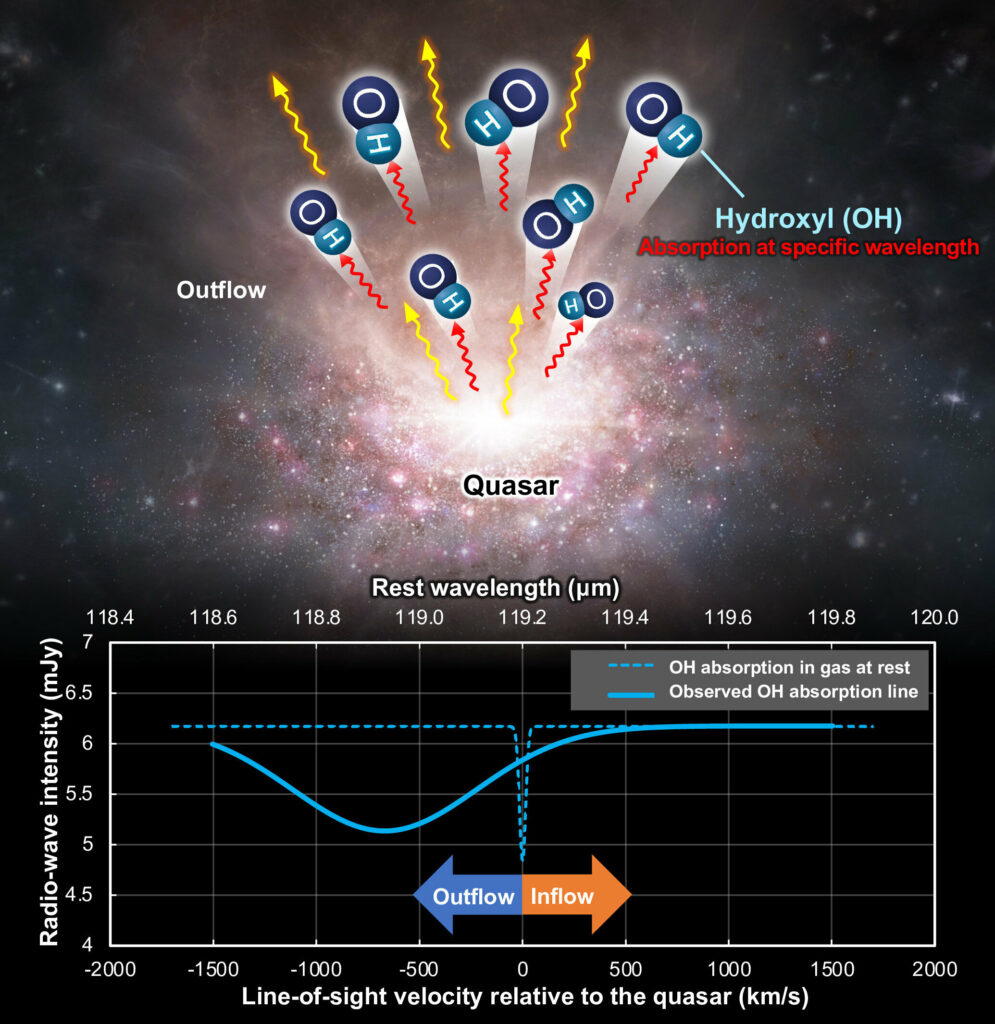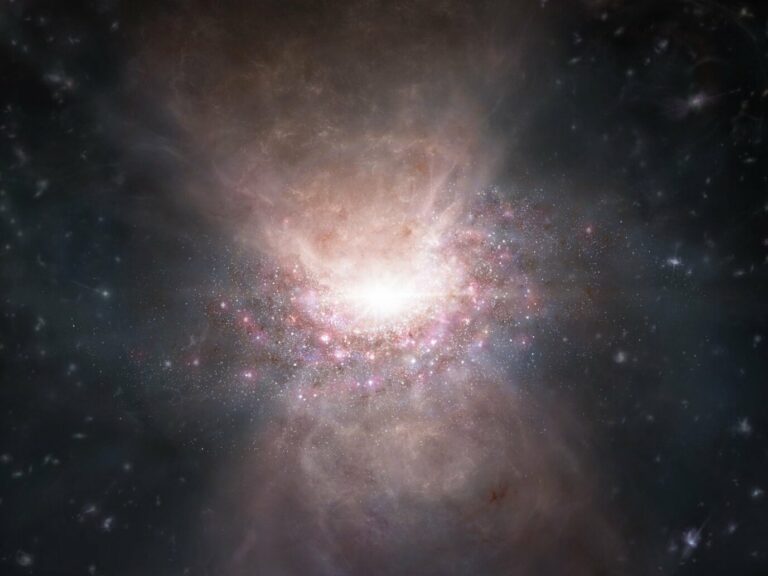ALMA Detects the Silhouette of a Molecular Outflow from a Quasar in the Early Universe, Less Than 1 Billion Years Old.
The confirmation of theoretical predictions has come with the discovery of a molecular gas outflow from a quasar during the early stages of the universe, when it was less than a billion years old.
Quasars are compact regions found at the center of massive galaxies, powered by supermassive black holes. They emit an intense amount of light and appear similar to stars, despite being located at great distances from Earth. Due to their brightness and distance, they offer valuable insights into the conditions of the early universe, specifically when it was less than a billion years old.
A team of researchers, led by Assistant Professor Dragan Salak from Hokkaido University, Assistant Professor Takuya Hashimoto from the University of Tsukuba, and Professor Akio Inoue from Waseda University, has made a significant discovery. They have found the first evidence of star formation suppression caused by an outflow of molecular gas in a quasar-host galaxy during the early universe. Their observations, conducted using the Atacama Large Millimeter/submillimeter Array (ALMA) in Chile, have been published in The Astrophysical Journal.
Molecular gas plays a crucial role in the formation of stars. It serves as the primary fuel for star formation, and when present in high concentrations within a galaxy, it leads to the creation of numerous stars. However, in galaxies hosting quasars, the ejection of this gas into intergalactic space at a faster rate than it can be consumed by star formation effectively hinders the formation of stars.

Salak explains that according to theoretical work, molecular gas outflows have a significant impact on the formation and evolution of galaxies since they can regulate star formation. The researchers anticipated that quasars, being highly energetic sources, could generate powerful outflows.
The quasar under observation, J2054-0005, has a remarkably high redshift, indicating that it and the Earth are rapidly moving away from each other.
Hashimoto states that J2054-0005 is one of the brightest quasars in the distant universe, making it an ideal candidate for studying powerful outflows.
To observe the outflow of molecular gas from the quasar, the researchers utilized ALMA. As the only telescope with the necessary sensitivity and frequency coverage to detect molecular gas outflows in the early universe, ALMA played a crucial role in this study.
Regarding the methodology employed, Salak explains that the outflowing molecular (OH) gas was discovered through absorption. This means that the researchers did not directly observe microwave radiation emitted by the OH molecules. Instead, they observed the radiation emitted by the bright quasar, and the absorption occurred when the OH molecules absorbed a portion of this radiation. In essence, it was akin to detecting the presence of gas by observing the “shadow” it cast in front of the light source.

The initial outcomes of this research provide compelling evidence that quasar-host galaxies experience significant molecular gas outflows, which have a profound influence on the evolution of galaxies during the early cosmic era.
Salak asserts that molecular gas holds immense significance within galaxies as it serves as the fundamental source for star formation. Our discoveries demonstrate that quasars possess the ability to hinder star formation within their host galaxies by expelling molecular gas into the vast expanse of intergalactic space.
This article is republished from PhysORG under a Creative Commons license. Read the original article.
Do not forget to share your opinion with us to provide you with the best posts !




0 Comments